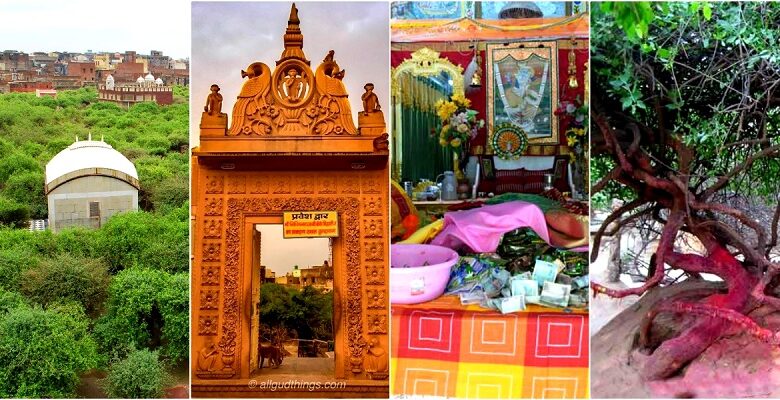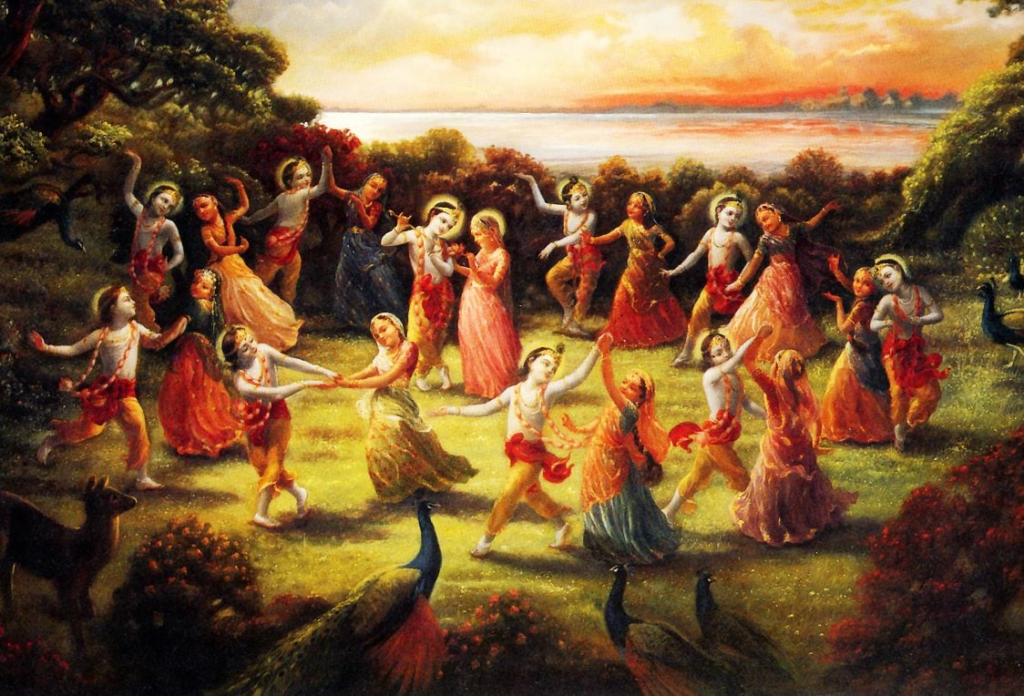Nidhivan: India’s Enigmatic Forest of Mysteries and Legends

By Agnibeena Ghosh
Nidhivan, nestled in the heart of the sacred town of Vrindavan in Uttar Pradesh, stands as one of India’s most enigmatic and mysterious places. This lush forest has long been cloaked in an irresistible allure of mystique and legends, drawing travelers from far and wide. At the heart of Nidhivan’s intrigue lies the Rang Mahal temple, renowned as the sacred site where Lord Krishna adorned Radha Rani with his own hands.
Nidhivan’s mysticism has beckoned visitors for centuries, with its rich tapestry of stories and legends. It’s believed to be a forest where Lord Krishna himself performed divine leelas, enchanting pastimes, with the gopis during his earthly sojourn. The name “Nidhivan” translates to the “Forest of Treasures,” alluding to the myriad of legends and mysteries interwoven with its very soil.

One of the most captivating tales associated with Nidhivan revolves around a perceived curse. Legend has it that Radha, the eternal consort of Krishna, grew displeased with his playful interactions with other gopis, the cowherd girls. Her anger led her to pronounce a curse upon Nidhivan, transforming it into an impenetrable grove. Radha’s curse ordained that once the sun dipped below the horizon, no birds, animals, or insects could inhabit this mystical forest.
For thousands of years, this curse has held its grip on Nidhivan. To this day, no one dares to venture into the forest after nightfall. It is said that those who defy this decree meet with an eerie and mysterious fate—some go blind, others meet their untimely demise, and some become paralyzed. The haunting silence of the forest guards its secrets, as no one has emerged from its depths to recount their experience.
Among the fabled occurrences in Nidhivan, the divine Ras Leela takes center stage. Locals firmly believe that Lord Krishna, accompanied by Radha and the gopis, descends upon Nidhivan after nightfall to partake in the Ras Leela—a celestial dance of love. Those fortunate enough to witness this ethereal event are said to lose their sanity and consciousness, overwhelmed by the divine spectacle. To ensure that no one intrudes upon this sacred act, the doors to the forest are securely locked after sunset and opened only with the dawn’s light.

Nidhivan is also celebrated for its distinctive trees—small and gnarled, they stand as a testament to the region’s unique character. According to local lore, these trees are far from ordinary; they are believed to be the earthly forms of gopis who, in their previous lives, received a divine blessing to take on the tree’s form. This transformation allowed them to witness the enchanting leelas of Lord Krishna.
The legends of Nidhivan in Vrindavan offer a glimpse into India’s profound spirituality and mysticism. Whether one embraces these stories as literal truths or symbolic narratives, there is an undeniable sense of divine presence that envelops Nidhivan. The ethereal aura of this sacred forest continues to captivate the imagination, drawing those who seek to explore its mysteries and encounter the echoes of a timeless and enigmatic past.

In the Rang Mahal inside the Nidhi Van, the bed made of sandalwood is prepared for Lord Krishna every night. On the bedside are kept a jar filled with water, a Neem Daatun (to brush teeth) and Pan (betel leaf with areca nut). It is believed that once the doors are opened in the morning, the bed looks as if someone has slept in it, articles kept disturbed, the water in jar is also looked consumed and so does the Pan and the Neem Datun. Many TV channel and their investigative journalists have recorded these phenomenon and which appear to be a reality.






